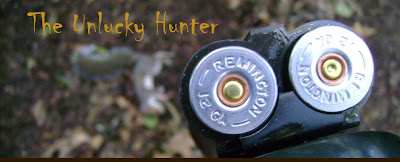Giraffes can't swim.
I don't know if giraffes can swim or not. I did absolutely zero research. I totally pulled it out of my but. I could write a blog post about how giraffes cannot swim, not cite a single source, and most people would believe me. People do the same thing for medical advice. They trust a forum or blog post over their doctor without doing an ounce of responsible research. I know people who do it every day.
 |
| After a little research I discovered that giraffes in fact can swim |
Anyway, in my research I have found some disagreement about how to treat snake bites. Unfortunately, I have not found much reliable information on the subject. Apparently there has not been a tremendous amount of research on every hunters worse nightmare.
Growing up I was taught that the only way to survive a poisonous snake bite was to cut an X over each fang mark and suck out the poison. Then you had to kill the snake, go to the hospital, and get anti-venom. If you did not kill the snake the doctors would not know what type bit you and would not know what type of anti venom to administer. If they gave you the wrong type you would die.
As an adult I found out that some of what I was taught was slightly inaccurate. I learned that even though the snake bite kit I kept in my backpack contained a razor, the bite should not be lanced. It only introduces bacteria to the wound. I also learned not to suck the poison out with my mouth. Doing so would get poison in your mouth. Snake poison makes your foot rot off. The only thing worse that your foot rotting off is your mouth rotting off.
| You don't want this happening in your mouth |
I found several sites that referenced a study that claimed that suction does not help on large muscle areas like a thigh or bottom. However, if the bite is on a bony area like a hand or shin, suction can help. Unfortunately, I could not find the actual study, so it may just be here say.
Here is the most modern process for treating a poisonous snake bite: (sources cited)- Call EMS (Mayo Clinic)
- Immobilize the limb and keep still. By immobilize they mean don't move it. Apply a splint, but keep the dressing loose enough to slip a finger under. (Mayo Clinic)
- Remove jewelry or anything else that might constrict a limb when it swells. (Mayo Clinic)
- Position the bite below the heart. (Mayo Clinic)
- Wash the wound and cover with a clean, dry dressing. (Mayo Clinic)
- If a victim is unable to reach medical care within 30 minutes, a bandage, wrapped two to four inches above the bite, may help slow venom. The bandage should not cut off blood flow from a vein or artery. A good rule of thumb is to make the band loose enough that a finger can slip under it. (Red Cross)
- A suction device may be placed over the bite to help draw venom out of the wound without making cuts. Suction instruments often are included in commercial snakebite kits. (Red Cross)
- Try to remember what the snake looked like. Do not try to catch it. (CDC)
- Do not cut or shock (what!?!) the bite. (CDC)
- Do not apply a tourniquet. (CDC)
- Do not consume alcohol or caffeine. (CDC)
Of course, it is best to avoid getting bit in the first place. I wear snake boots  whenever I am out in the warm months. They make me much more confident.
whenever I am out in the warm months. They make me much more confident.
Tweet

